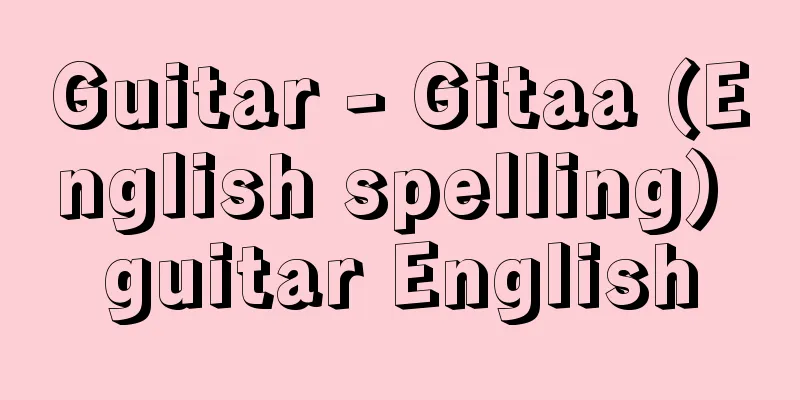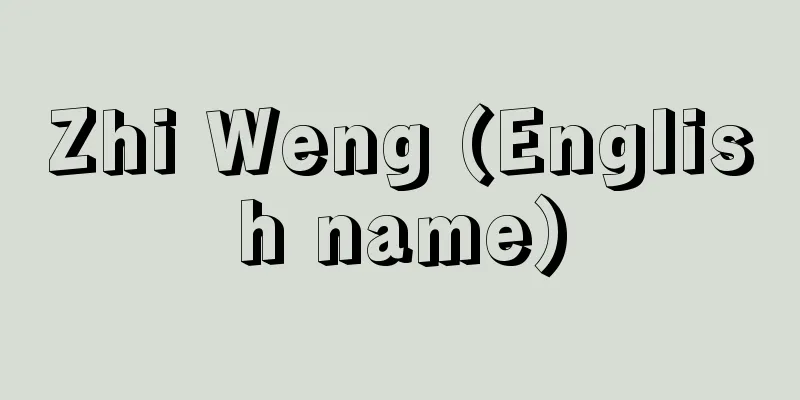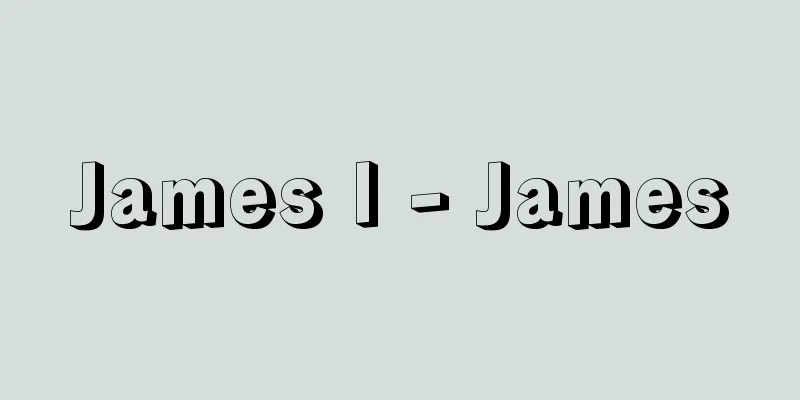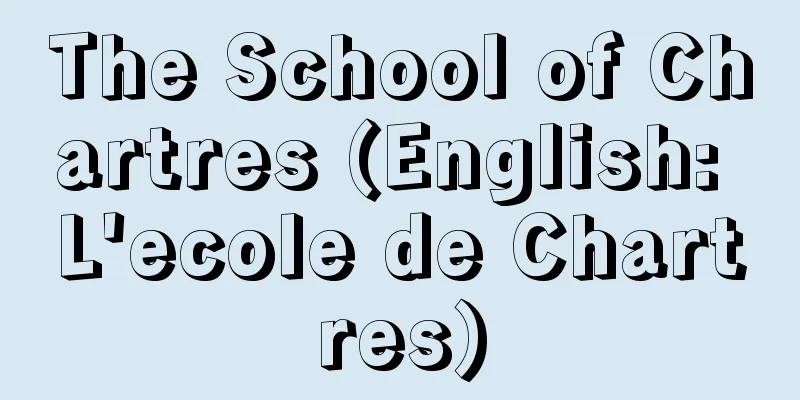Guitar - Gitaa (English spelling) guitar English

|
A type of plucked string instrument with a neck. It is used for both solo and accompaniment, but unlike the violin, it does not require accompaniment when played solo. There are many types of guitars, but the general characteristics they all share are that they have a flat top and back, a body with little waist and a sound hole in the top, and a straight neck with frets (not bent like a lute). [Maekawa Haruhisa] historyThe name guitar can be traced back to the ancient kithara, but the first instrument with a flat back and a narrow body like today's guitar is thought to have been the Latin guitarra latina from Spain and France in the 13th and 14th centuries. This instrument had a soft tone and was contrasted with the Moorish guitarra morisca (with an oval body with a bulge at the back and metal strings), which produced a high-pitched sound. In the 16th century, when the lute was at its peak in Europe, the vihuela was popular in Spain for about 50 years. The shape of the vihuela is similar to that of a guitar, but while guitars at the time had four courses of double strings, the vihuela had six courses of double strings. In the 17th century, five-course guitars called Spanish guitars, which added a single high-pitched string, were popular, but in the early 18th century, the guitar was overshadowed by instruments that could produce a wider range and louder sounds, and as it became an instrument for the common people, it was simplified to a single string. It became popular again at the end of the 18th century, when a lowest string was added, making it the same six single strings as today.Then, at the beginning of the 19th century, the narrow and deep body became wider and shallower, the waist became stronger, the number of frets increased, and the range became wider, and the shape of the classical guitar as we know it today was basically complete. Around this time, the same tuning method as today, [E 2 -A 2 -D 3 -G 3 -B 3 -E 4 ], was also established. Furthermore, in the mid-19th century, the body was made larger to obtain a powerful and rich sound, and the fingerboard was made wider and the string height lowered to make it easier to play with six strings. One of the most important makers at that time was Antonio de Torres (1812-1892) from Spain, and the tradition has been passed down in Spain ever since, producing many master craftsmen. Furthermore, in the 20th century, with the rise of jazz and popular music, various types of guitars, including the electric guitar, were developed. [Maekawa Haruhisa] Classical guitarIt has a total length of about one meter, six single strings, and originally used gut strings, but nowadays it usually uses nylon strings for the three treble strings and wound strings (thin metal wires wrapped around a nylon core) for the bass strings. The fingerboard has 17 to 20 metal frets spaced at semitone intervals, giving it a range of about four and a half octaves. There are three ways to play the right hand: (1) with the fingertip, (2) with the nail, or (3) with the fingertip and nail, with (3) being the most common today. To specify a specific finger on the right hand, the initial letters of the Spanish names are used: p (peh) for the thumb, i (i) for the index finger, m (mé) for the middle finger, a (a) for the ring finger, and ch (ché) for the little finger. The foundation of modern guitar playing was established by the Spanish guitarist Tarrega (1852-1909). Not only did he establish a new playing technique, but he expanded the repertoire by arranging works by Bach, Mozart, and others for the guitar, and he also composed his own compositions. His students included Pujol and Llobet, and under their influence Segovia, the greatest guitar player of our time, grew up. Thanks to Segovia, the guitar moved from salons to concert venues, and guitar music spread throughout the world. Among composers, the Spaniard Rodrigo wrote many excellent works for the guitar, including the Concierto de Aranjuez (premiered in 1940). [Maekawa Haruhisa] Other GuitarsApart from classical guitars, the other guitars that are commonly used today are flamenco guitars, folk guitars, and electric guitars. Flamenco guitars were developed in the Andalusia region of Spain as an instrument to accompany dance and singing. The shape is similar to a classical guitar, but the sides and back are harder and the top is thinner. The strings are lower, so when playing loud notes, the strings touch the fingerboard, producing a unique tone. The characteristic playing technique is rasgueados, where multiple strings are scraped down with the fingernails. Folk guitars are instruments often used in blues, folk, and country music, and became established worldwide as an easy-to-play, yet sophisticated instrument for accompanying vocals during the folk boom of the 1960s. The most commonly used type is the dreadnought type, which is large and relatively narrow, and is suitable for fingerpicking and strokes with a pick. They are strung with steel strings, and 12-string guitars with six courses of double strings are also commonly used, along with six-string guitars. The electric guitar was developed in the 1930s and uses pickups to convert the vibrations of the strings into electrical signals, which are then amplified by an amplifier and emitted from a speaker. There are both resonating body and non-resonating body types. Not only can the amplifier produce a richer volume, but the use of multiple pickups and effects allows for a wider variety of tone colors to be produced. [Maekawa Haruhisa] "Guitar Encyclopedia by Toshi Ogura, 2 volumes (1970, 1974, Ongaku No Tomosha)" ©Shogakukan "> Names of parts of a guitar Total length 99.5cm ©Yamaha "> Classical guitar Total length 97.85cm ©Yamaha "> Electric guitar (electric guitar… Made by Benito Sánchez de Aguilera. Double-stringed, six-course instrument. 1797. Wood. Collection of the Metropolitan Museum of Art, Spain. 18th century guitar Source: Shogakukan Encyclopedia Nipponica About Encyclopedia Nipponica Information | Legend |
|
有棹撥弦(ゆうとうはつげん)楽器の一種。独奏、伴奏の両方に用いられるが、独奏に際してはバイオリンのように伴奏を必要としない。ギターには多くの種類があるが、おおよそ共通した外形上の特徴は、表板と裏板とが平らで、表板にサウンド・ホール(響孔)のあるくびれの少ない胴をもち、まっすぐな(リュートのように折れていない)フレットのついた棹(さお)をもつことである。 [前川陽郁] 歴史ギターという名称の由来は、古代のキタラkitharaにまでさかのぼることができるが、今日のギターのように背面が平らでくびれをもつ胴の楽器は13、14世紀のスペイン、フランスのラテン風ギターguitarra latinaが最初と考えられる。この楽器は柔らかい音色をもち、甲(かん)高い音を出すムーア風ギターguitarra morisca(背面に膨らみがある楕円(だえん)形の胴と金属弦をもつ)と対比されていた。ヨーロッパでリュートが全盛であった16世紀にスペインではビウエラvihuelaが約50年間流行した。ビウエラの形はギターと似ているが、当時のギターが複弦4コースであったのに対し、ビウエラは複弦6コースであった。17世紀には、単弦の高音弦を加えた、スペイン・ギターとよばれる5コース・ギターが愛用されたが、18世紀初めになると、ギターは音域が広く大きな音を出せる楽器に押され、庶民の楽器になるとともに簡素化されて単弦になった。18世紀の終わりにはふたたび盛んになり、このころ最低音の弦が加わり現在と同じ6単弦となった。そして19世紀の初め、狭く深かった胴が広く浅くなり、くびれが強く、またフレットが増え、音域が広くなって、現在のクラシック・ギターの形がほぼできあがった。 またこのころ、今日と同じ〔E2-A2-D3-G3-B3-E4〕の調弦法も確立された。さらに19世紀中ごろには、胴を大きくして力強く豊かな響きが得られるようにされ、6弦での演奏に対応しやすいように、指板は広く、弦高は低くされた。当時のとくに重要な製作者にスペインのトーレスAntonio de Torres(1812―1892)があり、以後その伝統はスペインに受け継がれて、名工が多く生まれている。 さらに20世紀に入ると、ジャズやポピュラー音楽の隆盛に伴い、エレクトリック・ギターなどさまざまなギターが生まれている。 [前川陽郁] クラシック・ギター全長約1メートル、6単弦で、元来はガット弦を用いたが、現在では通常、高音側の3弦にナイロン弦を、低音側に巻線(ナイロンの芯(しん)に金属製の細線を巻き付けたもの)を用いる。指板には、金属製のフレットが半音刻みに17~20個つき、約4オクターブ半の音域をもつ。弾弦する右指の奏法には、(1)指頭、(2)爪(つめ)、(3)指頭と爪、を用いる3種があり、現在では(3)がもっとも一般的である。そして右手の特定の指を指定する際には、スペイン語の名称の頭文字をとって、親指はp(ペー)、人差し指はi(イー)、中指はm(エメ)、薬指はa(アー)、小指はch(チェー)の記号を用いる。現在のギター奏法の基礎を確立したのはスペインのタレガ(1852―1909)である。彼は新しい奏法を確立しただけでなく、バッハやモーツァルトなどの作品をギター用に編曲することでレパートリーを拡充し、自身でも創作をした。その高弟にプジョール、リョベートらが出、その影響下に現代最高のギター奏者セゴビアが育った。セゴビアによってギターはサロンから演奏会場へと進出し、ギター音楽は全世界に広まった。作曲家ではスペインのロドリーゴが『アランフェス協奏曲』(1940初演)など、ギターのための優れた作品を多く書いている。 [前川陽郁] その他のギタークラシック・ギター以外で現在よく使われるのは、フラメンコ・ギター、フォーク・ギター、それにエレクトリック・ギター(エレキ・ギター、電気ギター)などである。フラメンコ・ギターは、スペインのアンダルシア地方で踊りや歌の伴奏楽器として発達した。形はクラシック・ギターに似ているが、側・裏板が堅く、表板が薄めである。弦高が低めであるため、強音時には弦が指板に触れて独自の音色を生む。奏法上は、複数の弦を指の爪で掻(か)き下ろすラスゲアードが特徴的である。 フォーク・ギターは、ブルース、フォーク、カントリー音楽などに多く使われる楽器で、1960年代のフォーク・ブームによって、手軽で高度な歌伴奏の楽器として世界的に定着した。多く使われているのはドレッドノート・タイプとよばれる、大型でくびれの比較的弱いもので、フィンガー・ピッキングにも、ピックによるストロークにも適している。スチール製の弦が張られ、6弦のものとともに、複弦6コースの12弦ギターもよく用いられている。 エレクトリック・ギターは、ピックアップによって弦の振動を電気信号に変え、アンプで増幅してスピーカーから音を出すギターで、1930年代に開発された。共鳴胴をもつものと、もたないものとがある。アンプで増幅することにより豊かな音量が得られるだけでなく、ピックアップの複数化やエフェクターの使用などにより、音色の変化も多彩である。 [前川陽郁] 『小倉俊著『ギター事典』全2巻(1970、1974・音楽之友社)』 ©Shogakukan"> ギターの各部名称 全長99.5cm©ヤマハ"> クラシック・ギター 全長97.85cm©ヤマハ"> エレキ・ギター(エレクトリック・ギター… ベニート・サンチェス・デ・アギレラ製作。複弦6コース。1797年 木 スペインメトロポリタン美術館所蔵"> 18世紀のギター 出典 小学館 日本大百科全書(ニッポニカ)日本大百科全書(ニッポニカ)について 情報 | 凡例 |
<<: Kitaaiki [village] - Kitaaiki
Recommend
He - ka (English spelling)
One of the ancient Chinese ceremonial vessels. In ...
Six National Histories - Rikkokushi
A general term for six national histories compile...
Captain - Captain
Generally speaking, the term "pilot in comman...
Syllidae
...A general term for annelids belonging to the f...
Kamaage - Kamaage
In the Kansai region, shippou noodles with thicke...
Kala (English spelling)
In Sanskrit, it means time. In India, time was dei...
Aya Taiko - Aya no Taiko
...The fourth piece. The original, Aya no Taiko, ...
Awanou - Awanou
…Looking at the tax books of several countries in...
Centaurea sauveolens (English spelling) Centaurea sauveolens
…[Hiroshi Aramata]. … *Some of the terminology th...
Keicho gold and silver coins
Gold coins (oban, koban, ichibuban) and silver co...
Online system - online system
It refers to a method of processing information d...
Iijima [town] - Iijima
A town in Kamiina County in southern Nagano Prefec...
Organ neurosis
This refers to a physical functional disorder that...
Ueda Shozaburo
1894-1958 Educator and educational critic from th...
solo concerto (English spelling)
…The oldest instrumental concerto is the concerto...









